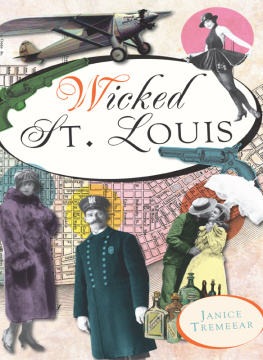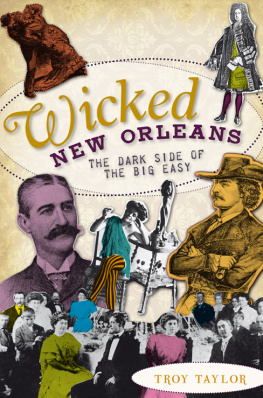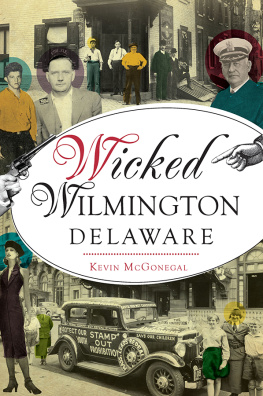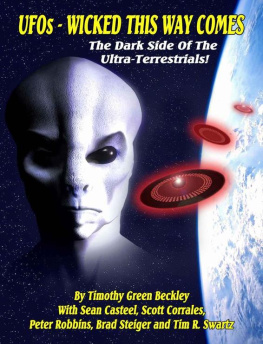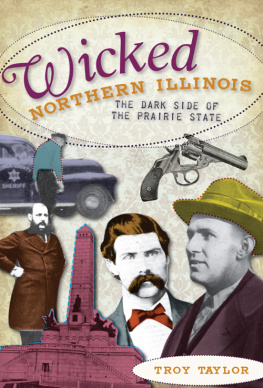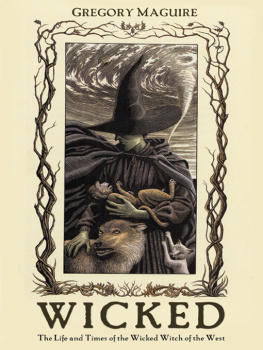FRANK ANDERSON

Published by The History Press
Charleston, SC 29403
www.historypress.net
Copyright 2010 by Frank Anderson
All rights reserved
First published 2010
e-book edition 2011
ISBN 978.1.61423.059.5
Library of Congress Cataloging-in-Publication Data
Anderson, Frank.
Wicked Fox cities : the dark side of the valley / Frank Anderson.
p. cm.
Includes bibliographical references.
print edition: ISBN 978-1-59629-930-6
1. Fox River Valley (Wis. and III.)--History, Local--Anecdotes. 2. Wisconsin--History, Local--Anecdotes. 3. Cities and towns--Fox River Valley (Wis. and III.)--History--Anecdotes. 4. City and town life--Fox River Valley (Wis. and III.)--History--Anecdotes. 5. Fox River Valley (Wis. and III.)--Social life and customs--Anecdotes. 6. Fox River Valley (Wis. and III.)--Social conditions--Anecdotes. 7. Corruption--Fox River Valley (Wis. and III.)--History--Anecdotes. 8. Crime--Fox River Valley (Wis. and III.)--History--Anecdotes. 9. Social conflict--Fox River Valley (Wis. and III.)--History--Anecdotes. 10. Fox River Valley (Wis. and III.)--Biography-
Anecdotes. I. Title.
F587.F7A54 2010
977.56--dc22
2010012450
Notice: The information in this book is true and complete to the best of our knowledge. It is offered without guarantee on the part of the author or The History Press. The author and The History Press disclaim all liability in connection with the use of this book.
All rights reserved. No part of this book may be reproduced or transmitted in any form whatsoever without prior written permission from the publisher except in the case of brief quotations embodied in critical articles and reviews.
To my brother, Geoff. He would have gotten a big kick out of this.
CONTENTS
Prologue
SEDAN DAY
The Fox Cities in the Late 1800s
Sedan Day is the celebration of German unification after the victory over the French at the Battle of Sedan in 1870.
On the same day that a lone drunken Prussian war veteran paraded up and down the streets of Appleton celebrating Sedan Day; on the same day that four small children drowned while swimming amidst floating timbers near the log-choked river frontage of Morgan Mill in Oshkosh; on the same day that a tramp bought a bottle of carbolic acid at Schultzs drugstore in Neenah, climbed into the far recesses of an empty boxcar and drank it; on the same day that flower thieves stole all of the flowers recently placed on graves at Riverside Cemetery in Appleton (they would repeat the act the following week); on the same day that Patrick Garughty of Menasha was stripped naked, severely beaten and then tarred and feathered by his own neighbors; on the same day that Thomas Welshs dog killed eight sheep on the property of August Plamann outside of Appleton; and on the same day that workmen digging out an old basement in Kaukauna found the bones of a mother with her small child, Miss Lena Oehlkea resident at the Northwest Insane Asylum in Oshkosh who never understood why she was there, who was already thirty-five years old and who had just been seen in the asylum kitchen calmly peeling potatoeswent to her room, pulled out a case knife she had hidden in her apron and cut her throat from ear to ear.
Chapter 1
HILLS OF THE DEAD
Houses around here, especially those in Menasha, Oshkosh, Neenah over by Little Lake Butte Des Morts and Dog Town and up there by...whats that place called?...Sherwood...they lie over layers of the crushed displaced bones of our ancestors. We Indians dont like to have our bones touched or re-arranged let alone plowed over by some farmer or excavated by some white guy in a scholar suit or turned into land fill...were real touchy about that. Leave our bones alone. Its no wonder those places have plumbing problems...if you know anyone that lives in those places, ask them if they have bad dreams at night.
Native American and former Fox Cities resident (after being filled in on the latest round of sudden water pipe explosions that seem to occur exclusively in new houses built over ancient burial mounds)
Native Americans in Wisconsin built between fifteen and twenty thousand moundsmore mounds than are found in any other region of North America.
There have always been Fox Cities. In the two thousand years that preceded the noisy arrival of white settlers, a long succession of societies lived along the banks of the Fox River and on the shores of its interconnected lakes. The older ones left behind a wide array of burial and religious structuresmostly round, some rectangular and many in the shape of animals. The animal-shaped effigy mounds were more likely to be preserved simply because they were more interesting to look at. Either way, conical or animal, most were plowed under.
In 1863, on the western shore of Little Lake Butte des Morts, workmen in the employ of the Northwestern Railway began tearing down the iconic burial mound that had stood watch over this widening of the Fox River for countless centuries. This was not the first threat to the great hill. The arrival of white settlers a mere twenty years before had brought out souvenir huntersamateur tomb raiders who dug away at the upper layers of the hill in search of relics, bones and anything out of the ordinary that could be displayed in their new frame homes and cabins. By 1845, the hill was pockmarked with their shallow pits. Those with an appreciation for the ancient landmark were few. Observing the hill in 1850, Increase Lapham, Wisconsins first scientist and the father of the United States Weather Service, had high hopes:
It is to be hoped that a monument so conspicuous, and so beautifully situated, may be for ever preserved as a memento of the past. It is a picturesque and striking object in passing along this fine lake, and may have been the cause of serious reflections and high resolves to many a passing savage. There is neither necessity nor excuse for its destruction; and we cannot but again express the hope that it will be preserved for the benefit of all who may pass along that celebrated stream.
Celebrated stream, indeed. Most of the people passing along the Fox River in 1863 were not concerned with ancient landmarks.
Americans had long believed that they were divinely ordained to push west, remove the savages and settle the lands. It was their destiny. The great land grab that created our country began well before the Revolutionary War. The Ohio Valley was the first to go. The formula was always the same: a brutal war followed by removal followed by an influx of settlers. These Americans were a self-absorbed people. The freedom of which they talked was only for them, and entire tribes vanished in their wake. If God had something to do with it, then so much the better. This belief was validated a few months after the Hill of the Dead was taken down. In December 1863at the height of the Civil WarSecretary Salmon Chase instructed the U.S. Mint in Philadelphia to stamp a new motto on American coins. The following year, In God We Trust first saw the light of day on a two-cent piece. It was official: God, Money and America were inseparable.
The American arrival in the Fox River Valley proved to be more of a cultural than military clash. The army arrived first to set up a system of forts. Businessmen followed. They found themselves in the midst of an easygoing mix of French Catholic and pagan people. The fur trade was the business of the river, and the language of business along its banks in 1816 was French and Menominee.




